Fiat
G.50bis
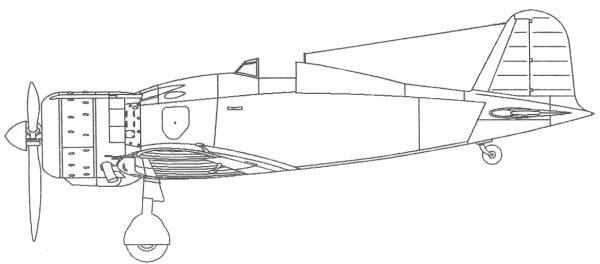
In 1935 the
Italian Ministry of Aviation issued specification R that called for a
cantilever monoplane fighter with retractable landing gear, preferably
powered by a Fiat A.74RC-38 engine. Several companies entered the
competition with one of them being the Fiat Company. The development
was complicated by the Ministry's vague and constantly changing
requirements that ranged from light interceptor to fighter bomber. The
prototype first flew on February 26, 1937. It was then handed over for
military trials after some slight modifications. The initial order for
45 machines was placed even before the machine was transfered for
trials. Compared to its competitors, the G.50 ended up in second place
behind the Macchi C.200. Eventually both types were accepted by the
military. In February 1939 12 machines were sent to Spain for combat
trials but they arrived too late to see combat. Service experience
found issues with the original bubble canopy material and faulty
landing gear retraction. Newer machines were designated G.50-II were
equipped with a semi opened canopy, new landing gear and modified tail
planes. In 1940 production was switched to the G.50bis version which
featured the final shape of the tail planes, enlarged fuel tanks
and strengthened armor plating. Due to its common African
assignments this version was often equipped with a dust filter. By 1943
the G.50bis was already becoming obsolete compared to other Allied
types and many were switched to the fighter bomber role with wing racks
installed. 67 of them were defending Sicily when the Allied landing
occurred. When the armistice was signed, the Italian Allied Air Force
took over 48 machines. Finland placed orders for the G.50 in October
1938 and the aircraft was quite successful in Finland, during the
Winter War they had a victory to loss ratio of 11/2 and during the
Continuation War 88/4. In small numbers the G.50s served in the
Croatian Air Force and the Luftwaffe.
The
Kit
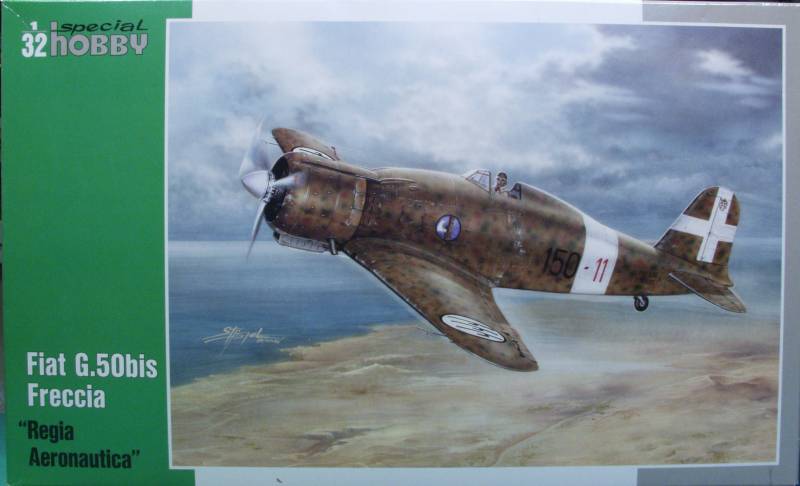
The Special Hobby Fiat G.50
comes in a fairly large (for the contents anyway) top open box with
nice artwork on the top. Inside the box is one large resealable plastic
bag containing four sprues of medium gray plastic. Also in the bag are
two small zip lock bags, one with the clear parts and the other resin
parts. In the box is another medium sized resealable bag containing the
decals, a PE fret and on very small acetate piece. The plastic parts
are representative of what Special Hobby parts have looked liked in
their most recent kits, a smooth almost glossy finish with fine
engraved panel lines, subtle fabric detail on the control surfaces and
raised or recessed surface detail as applicable. The parts are cleanly
molded with only a minimal amount of flash.
The
wheels
are not weighted. The propeller is the multi part type and is not keyed
so care will need to be used to get the blade angles set uniformly.
There are a number of parts that are not used on this version which
indicates other versions will be released in the future. See photos
below.
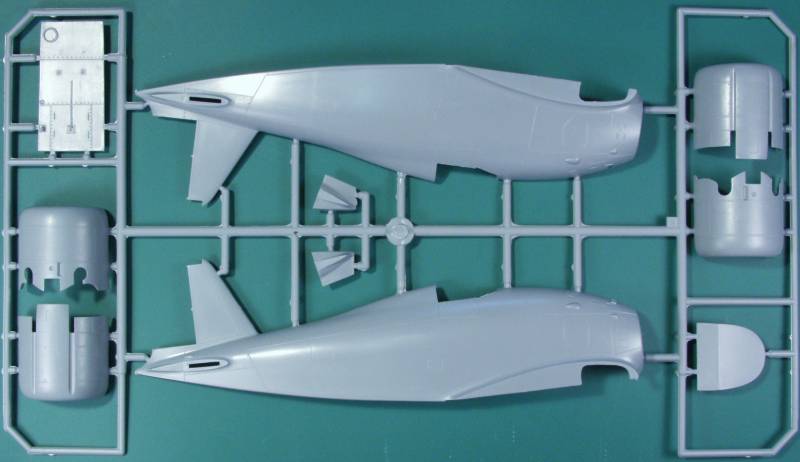
Photo below show the
molded interior framework, only one of the ejector towers may show and
even it may not be that visible once the cockpit parts have been
installed.
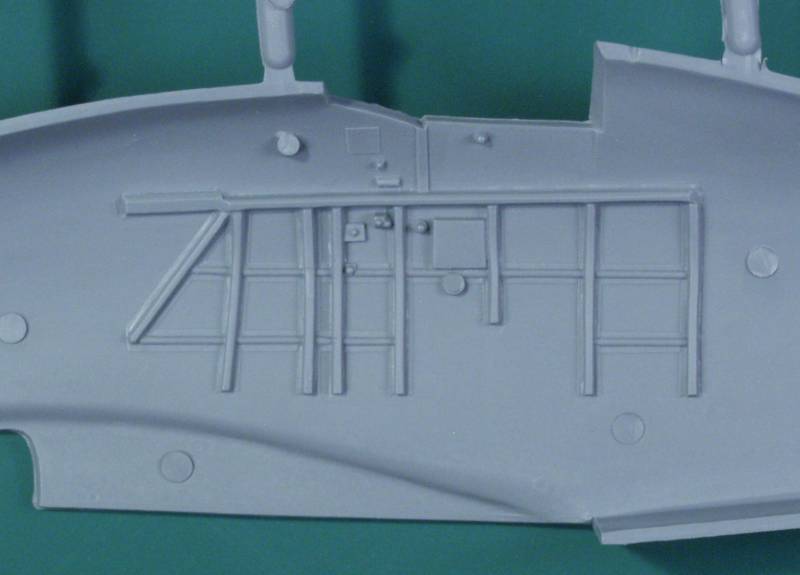
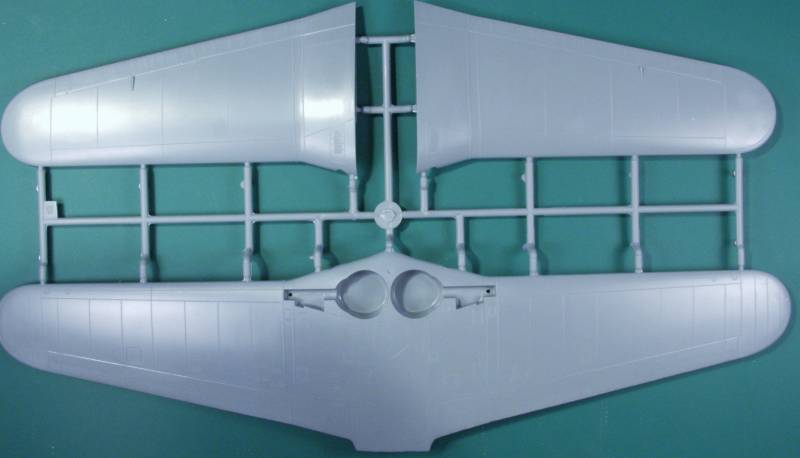
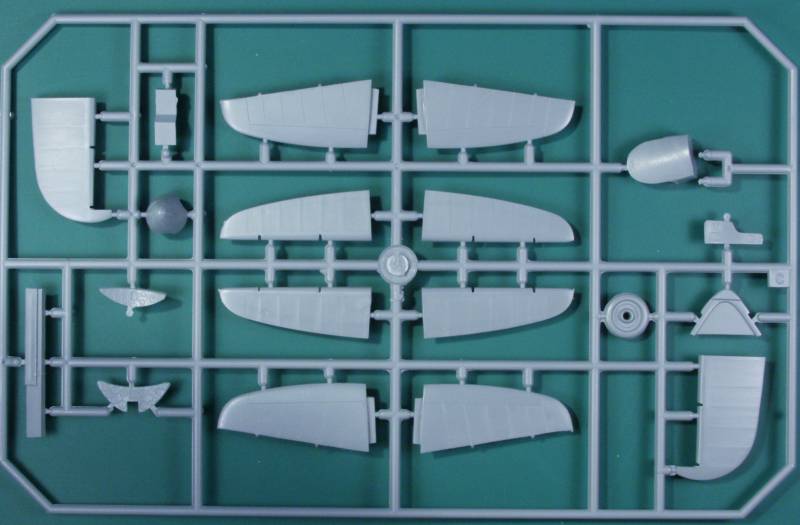
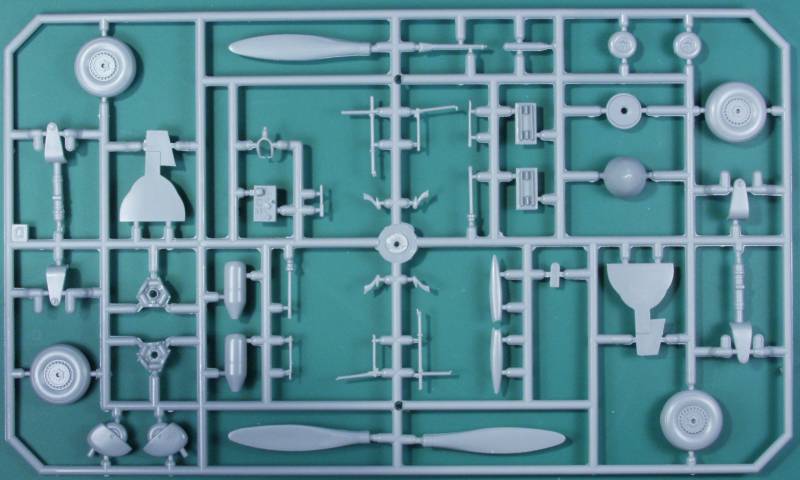
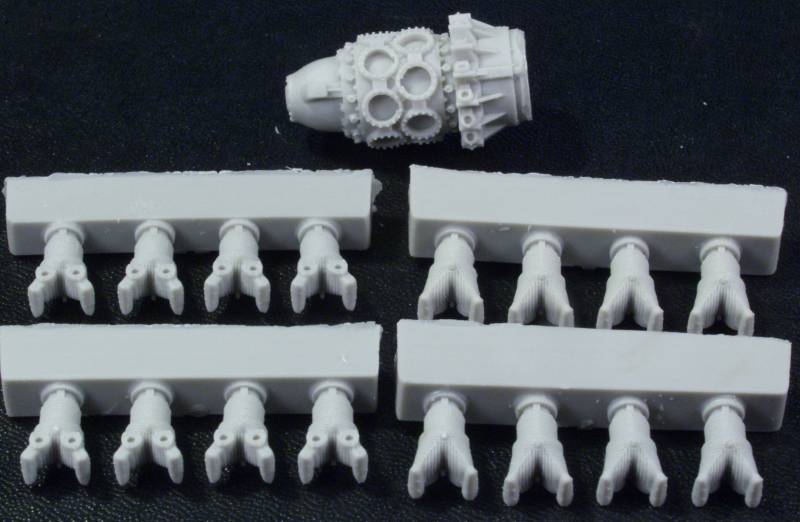
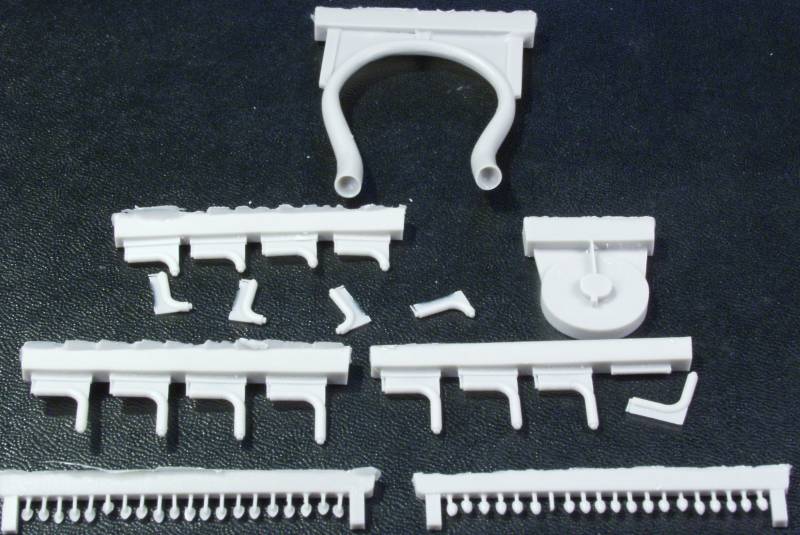
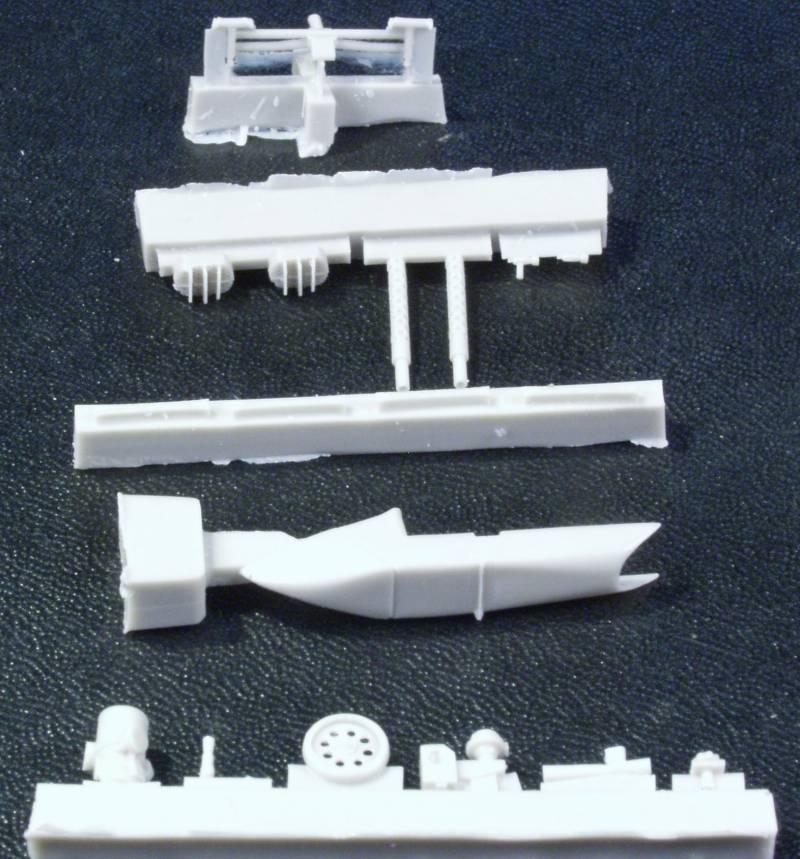
The PE fret is
mostly for the seat harness but there are a couple of other cockpit
details as well.
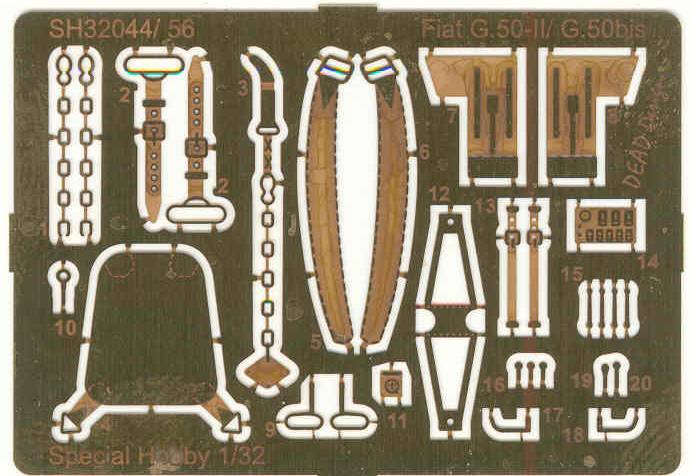
The
clear parts are reasonably
thin and nice and clear, other than the windscreen the only
other parts
supplied clear are for a navigation light, only one of the four
shown
are called out in the instructions.
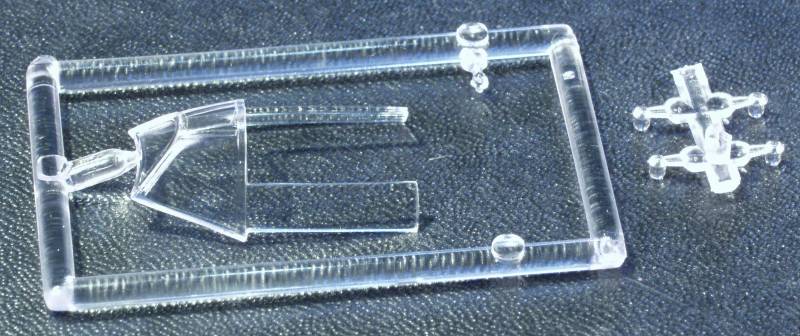
The
decals are thin, well
printed and appear to be opaque where needed. On some of them
you may
want to trim away some of the excess film. Markings are supplied
for
four different aircraft, all in the usual complex Italian
schemes that
will test your talent and patience. See below.
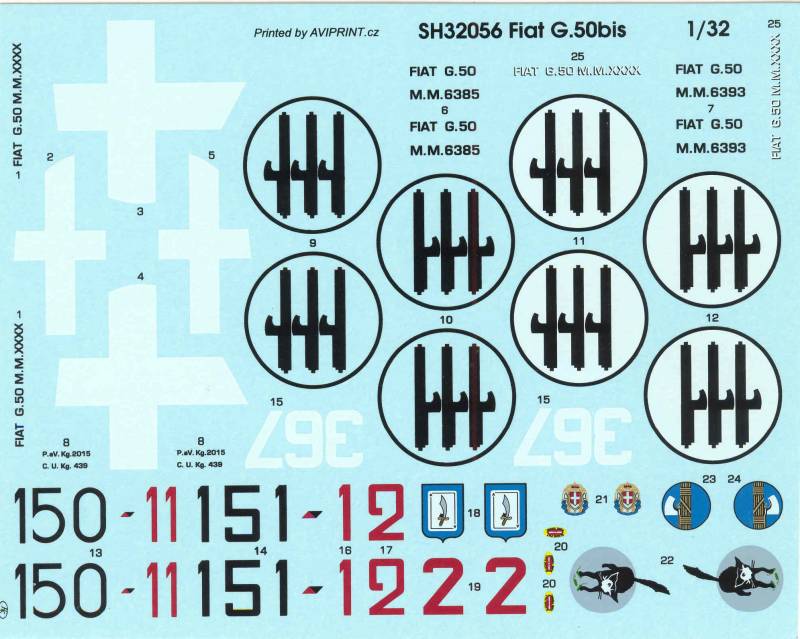
The
instructions
are printed on three A4 sheets folded and one half
page
put together to form a small booklet of fourteen
pages. The first page
has the aircraft history in Czech and English,
pages 2 and 3 contain a
parts map and symbols chart, pages 4 through 9 are
the assembly steps
with one containing a color chart with Gunze
numbers and generic color
names, pages 10 through 13 have the painting and
marking instructions
and page 14 is a catalog of Special Hobby
items.
After
Market
Goodies
Other than resin wheel sets
offered by
both CMK and Squadron I have found no other items available at
the time
of this review.
Conclusions
This is another nice kit
by Special
Hobby of a significant aircraft that has been mostly ignored
by the
main stream manufacturers in this scale. Special Hobby kits
have been
getting much better the past few years and while they are
far from
being a shake and bake kit they do build up into nice models
even
though they still have some fit issues and challenges.
Recommended to
modelers with some limited run kit experience.
Links
to kit build or reviews
A build review
of the non bis version but essentially the same kit can be found
here.
References
Back
to the 1/32 scale Italian Aircraft page
Updated 12/31/13












